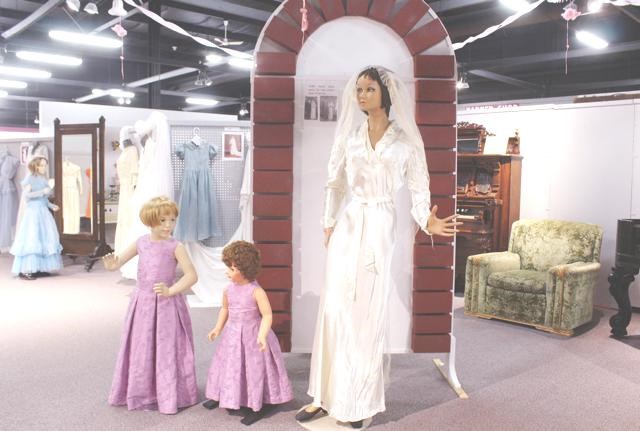The Assiniboia and District Museum is celebrating the summer wedding season and Canada 150 with a fascinating exhibit of historical wedding dresses. The display runs this summer for the months of July and August.
The long white gown is a mainstay of Canadian weddings now. But the practice of wearing a long and elaborate white wedding gown only goes back to the 19th century when upper-class English Canadian brides dressed in richly decorated silk gowns to display the wealth and social standing of their families. The tradition of white bridal gowns did not become standard until the 20th century.
The museum exhibit features over 50 dresses including brides, bridesmaids, flower girls. Each dress is hung or displayed on a manikin and they are accompanied by an original wedding photo and the date of the dress. A few bridal couple models are arranged to copy the wedding photos. The exhibit area has also been decorated with wedding streamers and other ornamentations.
The exhibit is displaying some gowns from as far back as 1910. There is even a dress from 1938 that was worn by two sisters from Congress for each of their weddings. The historical collection runs into the 1970s before the era of the modern wedding gown.
The dresses also reflect the fashions and values of the generations. Visitors will be able to see a marked change of styles through the decades. Sleeves are long and necklines high in 1910 and gradually give way to sleeveless dresses and open necklines by the 1970s. However, some of the most beautiful gowns come from the early 1910 to 1920s. The oldest dresses have hand stitching, handmade lace and taffeta layers which all combine to create an exquisite beauty. One dress from 1924 has particularly fine pearl beadwork on the collar.
Julie Newton, museum director, explained that the museum staff and volunteers put in a lot of work to get the exhibit ready. The dresses needed to be steamed of their wrinkles by hand and the delicate fabric meant that a lot of care was needed in their handling. The decorations and background sets for the displays were created by the volunteers.




